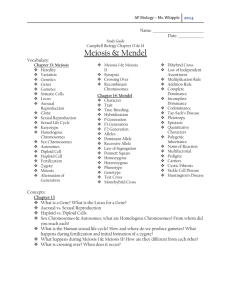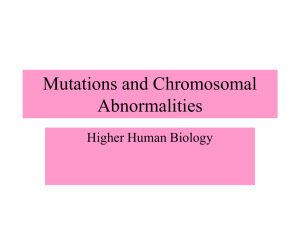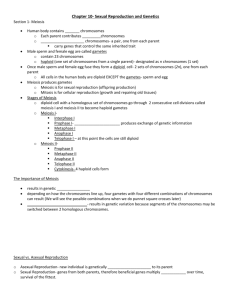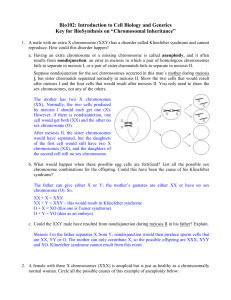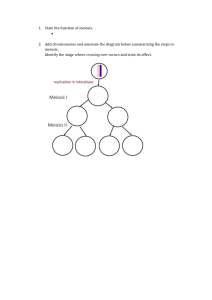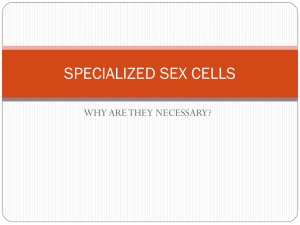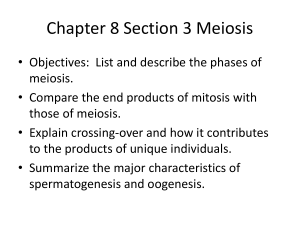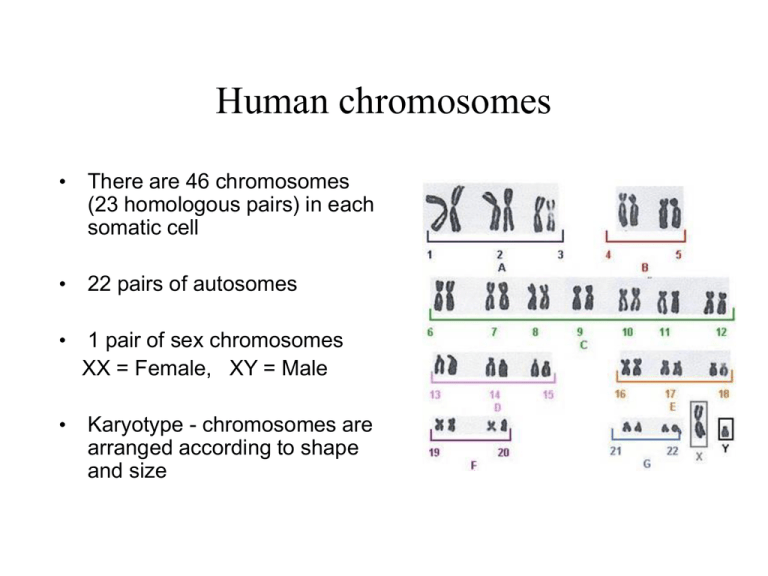
Human chromosomes
•
There are 46 chromosomes
(23 homologous pairs) in each
somatic cell
•
22 pairs of autosomes
•
1 pair of sex chromosomes
XX = Female, XY = Male
•
Karyotype - chromosomes are
arranged according to shape
and size
Nondisjunction and chromosomal disorders
– failure of chromosomes to
separate and segregate into daughter cells
•Nondisjunction
•Nondisjunction
may occur during meiosis 1 or
meiosis 2
•Abnormal
number of chromosomes may result
Normal meiosis
MEIOSIS I
Replicate DNA
Results of crossingover not shown
MEIOSIS II
Normal monosomic gametes
Nondisjunction during meiosis I
MEIOSIS I
Replicate DNA
Non-disjunction
MEIOSIS II
Disomic gametes
Nullisomic gametes
Nondisjunction during meiosis II
MEIOSIS I
Replicate DNA
MEIOSIS II
Non-disjunction
Disomic
Nullisomic
Monosomic
Monosomic gametes
EXAMPLES OF NON-DISJUNCTION
AN EXTRA COPY OF CHROMOSOME 21 CAUSES
DOWN SYNDROME
This condition is called trisomy 21.
Person with this condition suffers from
the Down syndrome.
Characteristic facial features:
• Round face
• Flattened nose bridge
• Small, irregular teeth
• Short stature
• Heart defects
Klinefelter's syndrome, 47,
It is the most common sex XXY
chromosome disorder and the
second most common
condition caused by the
presence of extra
chromosomes
Symptoms:
- Language impairment
- Lanky, youthful build or
rounded body type
- Low levels of Testosterone
and small testicles / Infertile
Turner’s Syndrome (X)
Common symptoms:
• Short stature
• swelling of the hands and feet
• Broad chest and widely
spaced nipples
• Low hairline
• Low-set ears
• Reproductive sterility
• Increased weight, obesity
• Small fingernails
• Characteristic facial features
• Webbed neck
What genetic disorder is this?
They may have never known…




